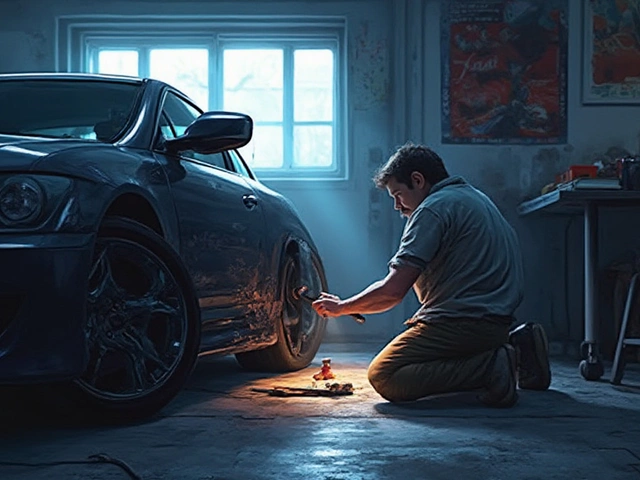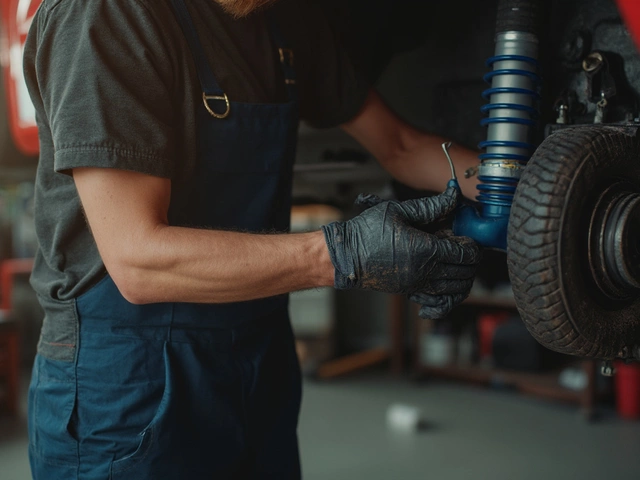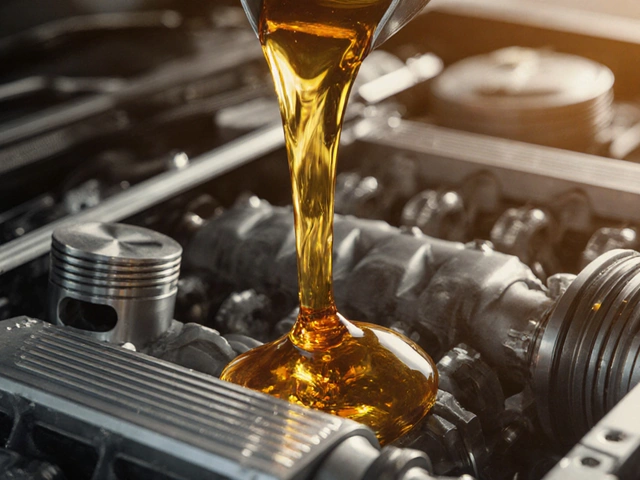So, you're looking to squeeze a bit more power out of your ride, huh? One of the popular tweaks among car enthusiasts like me involves upgrading the exhaust system. It's one of those modifications that can transform the sound and performance of your vehicle.
Let's start with the basics. At the core, an exhaust system's job is to get rid of engine waste gases efficiently. But it's not just about plumbing; the design and build can impact your horsepower in a big way. Essentially, the less restrictive the exhaust, the more power your engine can pump out. You've probably heard terms like 'cat-back' or 'headers' thrown around. These aren't just buzzwords; they're different components in an exhaust system that can make or break the performance boost you're after.
Diving into the details, some systems are known for giving noticeable horsepower gains. Cat-back systems, for instance, replace the stock muffler, tailpipe, and everything behind the catalytic converter, often freeing up the exhaust flow. Headers, on the other hand, replace the standard exhaust manifold with individual pipes for each cylinder, reducing back pressure and potentially upping your power numbers.
- Understanding Exhaust and Horsepower
- Different Types of Exhaust Systems
- Cat-Back Systems and Their Power Boost
- High-Performance Headers Explained
- Exhaust Materials: Does It Matter?
- Choosing the Right Exhaust for Your Car
Understanding Exhaust and Horsepower
Alright, let's break it down. At its core, your car's exhaust system is like the lungs of your vehicle. After the engine burns fuel to create energy, the exhaust system's job is to expel the leftover gases. Simple, right? But here's where it gets interesting: how efficiently this system works can directly affect your car's horsepower.
When we talk about horsepower, we're really talking about the engine's ability to create energy. A more efficient exhaust system can improve what's known as the 'exhaust flow.' In other words, if gases can escape the engine faster, the engine breathes better. This means improved performance and often, more power for your car.
Now, how exactly does this relate to exhaust systems? Well, there are a couple of key components to consider, like the diameter of the exhaust pipes, the design of the system, and the materials used. Bigger pipes generally mean less resistance, allowing those gases to flow out more smoothly. But here’s the catch: go too big, and you might lose that precious torque at lower engine speeds.
Many folks focus on upgrading specific parts like getting a high-performance cat-back system or advanced headers to boost power. Each has its own way of reducing back pressure, which is the unwanted resistance against gases exiting the engine. Less resistance equals potential horsepower gains.
To give you an idea of how various components impact performance, here’s a quick look at common exhaust system upgrades and their typical horsepower gains:
| Upgrade Type | Average Horsepower Gain |
|---|---|
| Cat-Back System | 5-10 HP |
| Performance Headers | 10-25 HP |
| Full System Replacement | 15-40 HP |
Remember, these numbers can vary based on your car type and how restrictive your stock system is. So, understanding what your specific ride needs is key to unlocking that extra power.
Different Types of Exhaust Systems
Okay, so let's break down the exhaust world, one piece at a time. There are quite a few options when it comes to picking an exhaust system, and each type changes how your car performs. Think of them like pizza toppings - some people swear by one, while others mix and match depending on their taste.
First up, we've got the cat-back system. It's called this because it replaces everything from the catalytic converter back. Most folks love it because it's a bolt-on mod that doesn't mess with emissions equipment, usually boosting horsepower and giving a beefier sound. Easy to install and generally legal on the street, it’s a favorite for street tuners looking for a little extra.
Next, there's the axle-back system. This one, as the name hints, replaces only the components after the rear axle. It might not improve performance as much as a full cat-back, but it can still give your car a more aggressive sound.
On to the headers, which are a bit more intense. These swap out your vehicle’s standard exhaust manifold for high-performance pipes that help exhaust gases escape quickly. This can reduce 'back pressure'—kind of like relieving a traffic jam—letting your engine breathe better and run more efficiently. It's a bigger job than just slapping on a muffler, but the gains in horsepower can be worth the hassle.
Another option to consider is the exhaust manifold-back or 'turbo-back' system, if you’re driving a turbocharged car. This involves changing everything from the turbo outlet to the end of the exhaust, and it can have a significant impact on horsepower and torque. It’s a more advanced project, so it's something to think about, especially if you're tuned for big power gains.
Lastly, we can't forget about the material. Exhausts are typically crafted from stainless steel, aluminized steel, or titanium. Stainless steel is durable and resists rust well, while titanium is super lightweight and often found in high-performance applications.
You've got options, and each type affects your car in a unique way. Whether you're chasing after big horsepower gains or just want your car to roar like a lion, the right exhaust system can make a difference.
Cat-Back Systems and Their Power Boost
Alright, let’s dive into cat-back systems, one of the favorites among car enthusiasts. Imagine them as a breath of fresh air for your engine. These systems typically replace everything from the catalytic converter to the tip of the tailpipe. You're swapping out the muffler, resonator, and sometimes even the pipes themselves. What's the deal with these parts? Well, they’re key players in how your engine breathes and, ultimately, in how much horsepower your car puts out.
So why do cat-back systems give a power boost? It mostly comes down to reducing back pressure. Stock exhaust systems are designed to keep things quiet, which often means they restrict the exhaust flow a bit too much. A well-designed cat-back system opens things up, allowing waste gases to escape more freely. Less back pressure equals more horsepower. It's like letting your engine breathe a bit easier, and who wouldn't want that?
What's cool is that, besides the power gain, these systems typically give your car a meaner sound—think of it as your ride announcing its newfound power. You might be wondering how much horsepower we’re talking about. Realistically, you can expect a boost of anywhere between 5 to 20 extra horses under the hood, depending on your engine and the specific cat-back system.
Installation is another bonus. They're often designed with a bolt-on approach, meaning you or a handy friend can swap it out without a mechanical engineering degree. So not only do you get a sharper sound and a bit more go on the pedal, but it’s usually a pretty straightforward upgrade.
If you're thinking about going for it, remember to check the compatibility with your car model. The construction material is a factor too—stainless steel is a common choice because it’s durable and resists rust, making it ideal for those who want longevity out of their setup.
To sum it up, cat-back systems are a great way to up your game in the performance exhaust world. They pack in power, enhance sound, and are generally a perfect do-it-yourself project if you're up for some weekend tinkering.

High-Performance Headers Explained
If you're serious about boosting your car's performance, you've probably heard a lot about high-performance headers. But what exactly do they do? Let's break it down.
Headers are like the starting line in the race to increase horsepower. They replace the stock exhaust manifold. Unlike the traditional manifold, which channels exhaust from all cylinders into a single pipe, headers give each cylinder its own exhaust pipe, which then merges into one larger pipe. This design reduces back pressure and allows each cylinder to evacuate more efficiently, leading to a bump in power.
You might wonder, are all headers the same? Not at all. There are two main types: short tube and long tube headers. Long tube headers generally provide a greater power increase because they allow the engine gases to flow more freely. However, they can be tricky to install and might not fit all car designs. Short tube headers, while slightly less effective in terms of power gains, often fit better in tight spaces and are easier to install.
Here's why the material matters: Headers are usually made of stainless steel, mild steel, or ceramic-coated steel. Stainless steel is durable and prevents rust. Ceramic coating does wonders for heat management, which can improve overall efficiency.
Choosing the right headers depends on your car's make and model, and your performance goals. Are you looking for a subtle power boost or something that dramatically alters your car's character? Also, factor in your budget—you don't want to break the bank for only minor gains.
| Type | Pros | Cons |
|---|---|---|
| Long Tube Headers | Higher power boost, better exhaust flow | Difficult installation, not suitable for all cars |
| Short Tube Headers | Easy installation, fits most cars | Less power gain compared to long tubes |
The choice of headers can indeed be a game-changer for your car's performance. Just remember, it should align with what your vehicle can accommodate and what you're aiming to achieve in terms of power.
Exhaust Materials: Does It Matter?
Ever wondered why some exhaust systems are pricier than others? A lot of it comes down to the materials used. Picking the right material isn't just about looks or durability; it also affects performance and, yes, horsepower.
When we talk about exhaust systems, the material can influence how well the heat is managed and how much the system weighs. The lighter and more heat-resistant, the better the system can perform. Let's check out some popular materials:
- Stainless Steel: It's a hot favorite. Stainless steel exhausts last longer because they're less prone to rust, thanks to the chromium in them. Plus, they handle heat pretty well, which can lead to a slight boost in horsepower.
- Aluminized Steel: This is the budget-friendly option. It offers decent protection against rust but won’t last as long as stainless. Still, it's an improvement over regular steel.
- Titanium: Now, this is top-of-the-line stuff, and you pay for it. Titanium is super lightweight and handles heat like a champ, which can really help optimize your car’s performance.
Wondering if there's a significant difference in weight? Check out this simple breakdown:
| Material | Weight Reduction Potential | Relative Cost |
|---|---|---|
| Stainless Steel | Moderate | Medium |
| Aluminized Steel | Low | Low |
| Titanium | High | High |
So, yes, material matters—a lot! Your best bet depends on your budget and how you use your car. If you're aiming for that extra edge in performance and you don’t mind spending a bit more, titanium could be a game-changer. But for most daily drivers looking for a bit more oomph without breaking the bank, stainless steel offers a solid balance.
Choosing the Right Exhaust for Your Car
Picking the right exhaust system can feel like a big decision—kind of like ordering a pizza with just the right toppings. But don't worry; it's about matching the system to your car's needs and your personal preferences. Let's break it down into some manageable steps.
First thing's first, what do you want from your exhaust upgrade? If your goal is to mainly increase horsepower, you'll want something designed to really open up the flow. In that case, a high-performance cat-back system or a set of long-tube headers could be the ticket. But if you're more about the sound and not so focused on squeezing out every last pony, a muffler swap could do the trick.
Consider the material of the exhaust, too. Steel, aluminum, and titanium are all in the game, and they each have their perks. Typically, stainless steel is the go-to for durability and resistance to rust. It's like the trusty old toolbox that just keeps working. But if you're living in places with harsh winters or coastal climates, that resistance could be extra valuable.
| Material | Weight | Durability |
|---|---|---|
| Stainless Steel | Moderate | High |
| Aluminum | Light | Moderate |
| Titanium | Very Light | Very High |
Next, think about any potential hassle involved. Some systems might need a bit more elbow grease to fit or could require small modifications to your car. Are you a DIY warrior ready for a weekend project, or do you prefer a setup that's more plug-and-play? Pro installs are always an option for those less inclined to turn a wrench.
Lastly, keep the noise factor in mind. Some exhaust systems get pretty rowdy, which might not be what you're after if your daily drive involves sleepy neighbors. Look at options with adjustable or quieter setups if sound is a concern.
Take the time to match your choice to your car and lifestyle. Doing a bit of homework can pay off big time, leading to a grin-inducing ride every time you hit the road.






